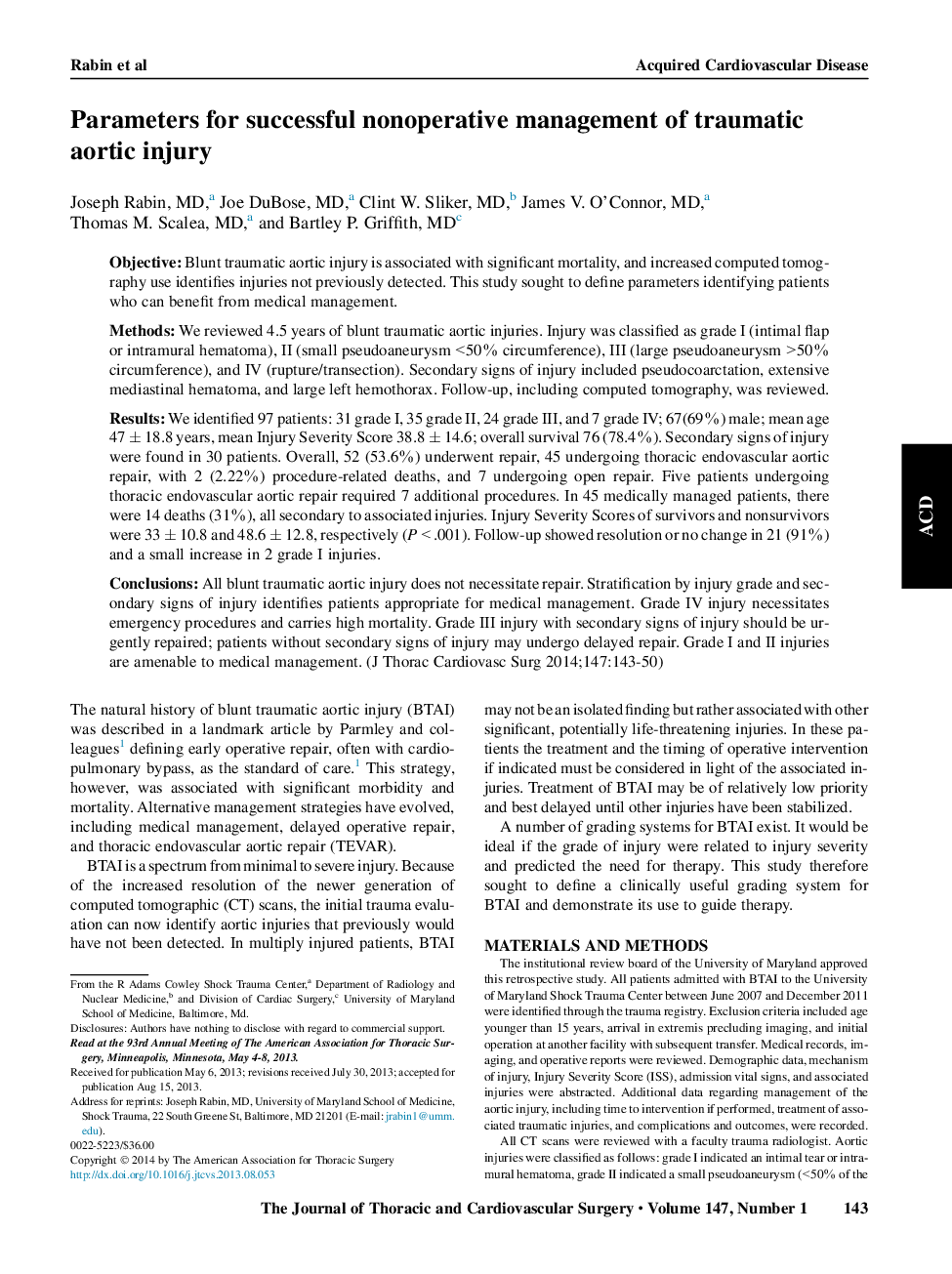| کد مقاله | کد نشریه | سال انتشار | مقاله انگلیسی | نسخه تمام متن |
|---|---|---|---|---|
| 2980573 | 1578615 | 2014 | 8 صفحه PDF | دانلود رایگان |
ObjectiveBlunt traumatic aortic injury is associated with significant mortality, and increased computed tomography use identifies injuries not previously detected. This study sought to define parameters identifying patients who can benefit from medical management.MethodsWe reviewed 4.5 years of blunt traumatic aortic injuries. Injury was classified as grade I (intimal flap or intramural hematoma), II (small pseudoaneurysm <50% circumference), III (large pseudoaneurysm >50% circumference), and IV (rupture/transection). Secondary signs of injury included pseudocoarctation, extensive mediastinal hematoma, and large left hemothorax. Follow-up, including computed tomography, was reviewed.ResultsWe identified 97 patients: 31 grade I, 35 grade II, 24 grade III, and 7 grade IV; 67(69%) male; mean age 47 ± 18.8 years, mean Injury Severity Score 38.8 ± 14.6; overall survival 76 (78.4%). Secondary signs of injury were found in 30 patients. Overall, 52 (53.6%) underwent repair, 45 undergoing thoracic endovascular aortic repair, with 2 (2.22%) procedure-related deaths, and 7 undergoing open repair. Five patients undergoing thoracic endovascular aortic repair required 7 additional procedures. In 45 medically managed patients, there were 14 deaths (31%), all secondary to associated injuries. Injury Severity Scores of survivors and nonsurvivors were 33 ± 10.8 and 48.6 ± 12.8, respectively (P < .001). Follow-up showed resolution or no change in 21 (91%) and a small increase in 2 grade I injuries.ConclusionsAll blunt traumatic aortic injury does not necessitate repair. Stratification by injury grade and secondary signs of injury identifies patients appropriate for medical management. Grade IV injury necessitates emergency procedures and carries high mortality. Grade III injury with secondary signs of injury should be urgently repaired; patients without secondary signs of injury may undergo delayed repair. Grade I and II injuries are amenable to medical management.
Journal: The Journal of Thoracic and Cardiovascular Surgery - Volume 147, Issue 1, January 2014, Pages 143–150
